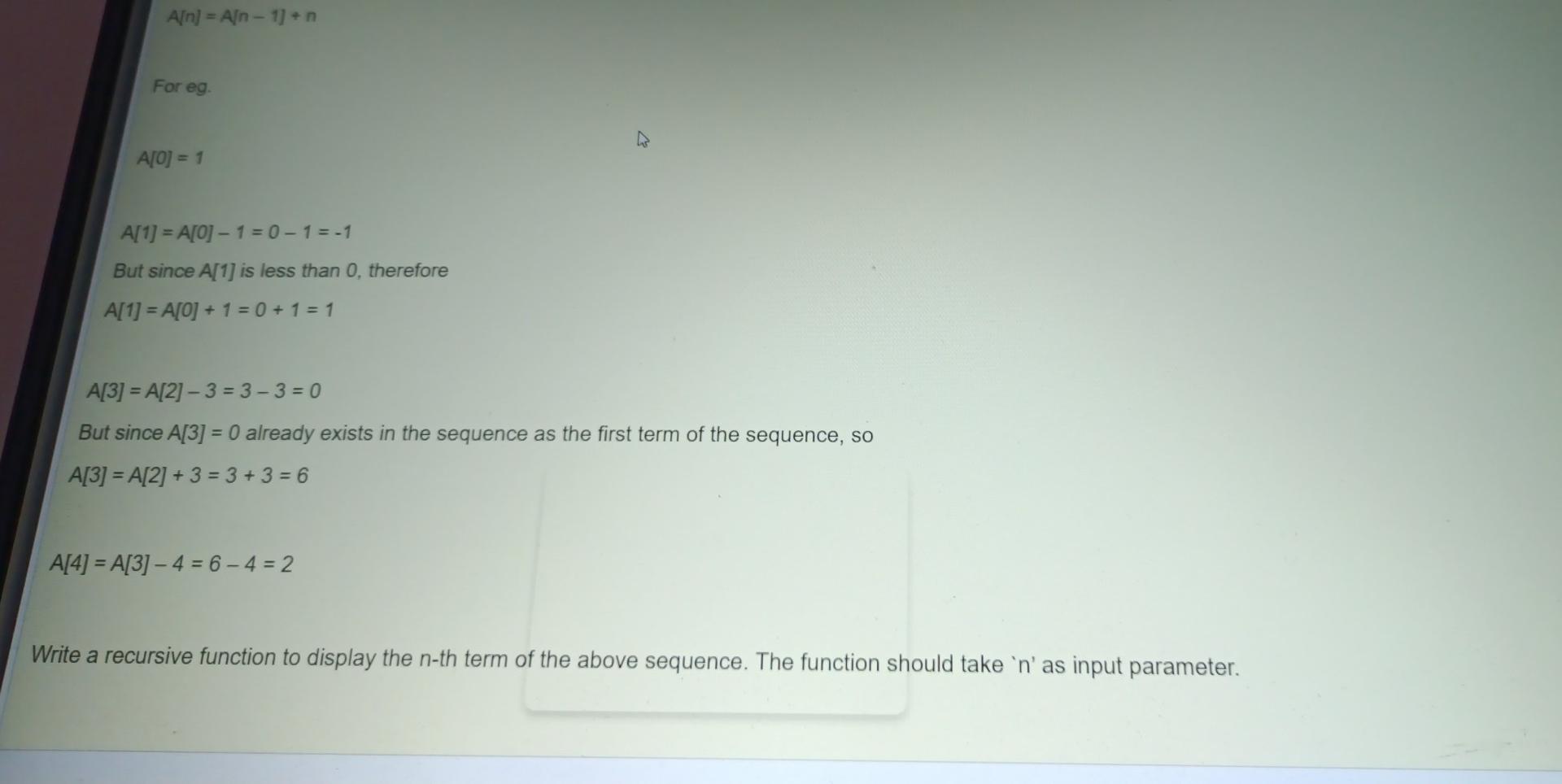Answered step by step
Verified Expert Solution
Question
1 Approved Answer
Consider the following sequence: A=0, 1, 3, 6, 2, 7, 13, 20, 12, 21, 11, 22, 10, 23, 9, 24, 8,... The first term of


Consider the following sequence: A=0, 1, 3, 6, 2, 7, 13, 20, 12, 21, 11, 22, 10, 23, 9, 24, 8,... The first term of the sequence is always zero, i.e., A[0] = 0 The remaining terms can be obtained using the following rule: A[n] = A(n-1) - But if A[n] is less than zero or A[n] already exists in the sequence, then A[n] = A[n - 1] + n For eg A[0] = 1 A[1] = A[0] - 1 = 0 - 1 = -1 But since A[1] is less than 0, therefore A[1] = A[0] + 1 = 0 + 1 = 1 A[n] = A - 1] + n For eg A[0] = 1 A[1] = A[O] - 1 = 0 - 1 = -1 But since A[1] is less than 0, therefore A[1] = A[0] + 1 = 0 + 1 = 1 A[3] = A[2]- 3 = 3-3 = 0 But since A[3] = 0 already exists in the sequence as the first term of the sequence, so A[3] = A[2] + 3 = 3 + 3 = 6 A[4] = A[3] - 4 = 6 - 4 = 2 Write a recursive function to display the n-th term of the above sequence. The function should take 'n' as input parameter
Step by Step Solution
There are 3 Steps involved in it
Step: 1

Get Instant Access to Expert-Tailored Solutions
See step-by-step solutions with expert insights and AI powered tools for academic success
Step: 2

Step: 3

Ace Your Homework with AI
Get the answers you need in no time with our AI-driven, step-by-step assistance
Get Started


